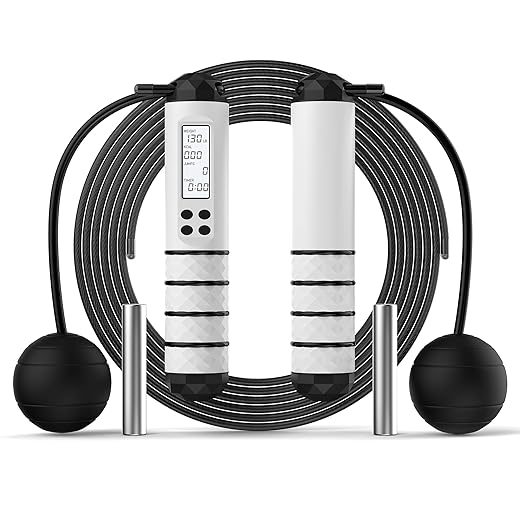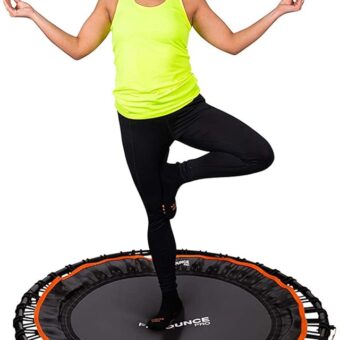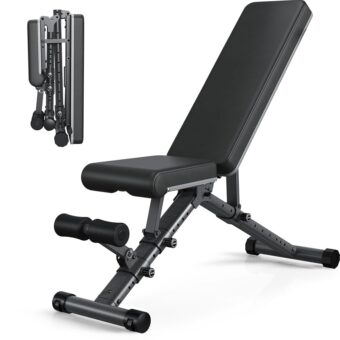Are you curious about whether jumping rope might be good or bad for your knees? You’re not alone! Many fitness fans love this exhilarating workout. It boosts cardio and coordination. But, they’re often worried about its impact on their joints. This post will explore the link between jumping rope and knee strength. We’ll address your concerns. We’ll also show how this fun exercise can boost your fitness if done right. Let’s explore the facts. They will help you make informed choices for your active lifestyle!



Understanding Knee Anatomy and Function
The knee is one of the largest, most complex joints. It is vital for our daily movements and activities. A good grasp of knee anatomy helps us appreciate its function. It also helps us understand the effects of high-impact activities, like jumping rope, on its health.
If you’re curious about how jump roping affects your running endurance, check out The Science Behind Jump Roping and Running Performance. It explains the biomechanics behind how this exercise enhances agility and stamina.



The Components of the Knee Joint
The knee joint comprises several key components, each working together harmoniously to support motion and withstand impact.
Bones
The knee is primarily made up of four main bones:
These bones are held together at the knee joint, creating a stable yet flexible connection.
Ligaments
Ligaments are tough bands of tissue that connect bones to bones. The knee contains four primary ligaments that help maintain stability:
Tendons
Tendons connect muscles to bones and are essential in transferring the power required to move the knee. The two major tendons around the knee are:
Cartilage
Cartilage is a smooth, rubbery tissue that cushions the joint:
How Knee Components Work Together
The knee’s design lets it bear weight and absorb shock. It must do this during dynamic activities like jumping rope. Here’s how each component contributes:
Practical Examples of Knee Health Products
To keep knees healthy for high-impact activities like jumping rope, use supportive products. Here’s a list of specific brands and models that are highly regarded for promoting knee health:
| Product Type | Brand/Model | Key Features |
|---|---|---|
| Knee Brace | McDavid 429 | Provides stability for ligaments; adjustable compression |
| Shock-Absorbing Insoles | Superfeet Green | Supports arches and reduces impact |
| Compression Sleeves | Bauerfeind Knee Support | Enhances blood circulation and stability |
| Joint Health Supplements | Schiff Glucosamine | Supports cartilage health; promotes mobility |
By integrating the right supportive products into their routine, individuals can help safeguard their knees from the stress of activities like jumping rope.
Knowing the knee’s anatomy and function is key. It helps us see the need to keep it healthy. With this, you can better choose exercise and support products for your knees. They should help prevent injuries and keep your knees healthy. To see how proper jump rope technique can strengthen these muscles safely, explore How to Incorporate Jump Rope Into Your Fitness Routine.
The Benefits of Jumping Rope
Jumping rope is not a childhood pastime. It’s a fantastic exercise with many health benefits. Jumping rope is an excellent choice. It will boost your cardio, coordination, and lower body strength. Want to discover what consistent jump roping can do for your body? Read What Happens to Your Health When You Jump Rope Daily. It highlights the long-term cardiovascular and muscular benefits of daily jumping.


Improved Cardiovascular Fitness
A major benefit of jumping rope is its ability to boost heart health. This high-intensity exercise raises your heart rate. It will improve your heart health over time. Here’s why incorporating jumping rope is vital for cardiovascular fitness:
Enhanced Coordination
Coordination is key for many activities. These include sports, dancing, and balancing in daily life. Jumping rope can dramatically improve your coordination through rhythmic movements and timing. Here’s how:
Increased Lower Body Strength
Jumping rope is a weight-bearing exercise. It can greatly enhance the strength of your lower body muscles. Here’s how it contributes to stronger legs and support for your knees:
Practical Examples of Benefits
To make the benefits even clearer, let’s look at a comparison table showcasing how jumping rope stacks up against other common exercises:
| Benefit | Jump Rope | Running | Cycling |
|---|---|---|---|
| Cardio Intensity | High | Medium-High | Medium |
| Muscle Engagement | Full-body | Primarily lower body | Lower body |
| Caloric Burn (cal/min) | 10-16 | 8-12 | 6-10 |
| Coordination Enhancement | Excellent | Moderate | Low |
| Joint Impact | Low to Moderate | Moderate to High | Low |
Taking It Up A Notch
To maximize your jumping rope experience, consider investing in some accessories. For instance, sweat-wicking workout gloves can improve grip and prevent blisters. The Trideer Weighted Jump Rope has a comfy grip and adjustable length. It’s a great choice for strength training and cardio.
Looking for the best ropes to get started? Don’t miss Top 5 Elite Jump Ropes You Need to Try!. It reviews top-performing ropes to match your training level and goals.
Tips for Starting Out
Jumping rope is a great addition to any fitness routine. It’s fun and it has many benefits. It builds strength, coordination, and endurance. It also supports knee health. Happy jumping!
Potential Risks and Considerations
Jumping rope is a fantastic workout, providing cardiovascular benefits and improving coordination. But be aware of the risks of this high-impact activity. This is especially true for those with knee issues or who lack proper technique. Let’s explore common injuries, prevention, and gear to keep your jumps safe.
Common Injuries Related to Jumping Rope
1. Patellar Tendinitis
Patellar tendinitis, often referred to as “jumper’s knee,” is a condition that results from overuse of the patellar tendon connecting the kneecap to the shinbone. Symptoms may include pain directly below the kneecap, swelling, or a feeling of weakness.
2. Anterior Cruciate Ligament (ACL) Strains
Jumping rope places stress on the knees, which can lead to ACL strains, especially if landing mechanics are poor. Symptoms might include sharp pain, swelling, and instability in the knee.
3. Achilles Tendonitis
Repetitive jumping can also stress the Achilles tendon, causing pain in the heel and back of the ankle. Watch for symptoms like stiffness, swelling, or difficulty pushing off while walking.
4. Shin Splints
Shin splints occur due to inflammation of muscles, tendons, and bone tissue around the shin. They can be exacerbated by poor footwear or surfaces that are too hard.
Minimizing Risks: Warm-Up and Technique
To prevent injuries, it’s vital to warm up and use proper technique. Here’s how:
Warm-Up Exercises
Perform these warm-up exercises for at least 5-10 minutes before your jump rope session:
Proper Technique
Focus on maintaining correct form while jumping rope:
Essential Equipment: Choosing the Right Gear
Selecting appropriate gear can significantly reduce the risk of injury. Here are a few product recommendations:
Jump Ropes
Footwear
Surface Considerations
Opt for a softer surface like a gym mat or wooden floor instead of concrete to reduce impact on your knees. Consider products like the ProForm Cardio HIIT Trainer Mat, which helps absorb shock.
Quick Tips for Safe Jumping
These guidelines will help you enjoy the many benefits of jumping rope while reducing risks. Remember, a close eye on your technique and the right gear can make a big difference in your jumping!
Finding Balance: The Impact of Jump Rope on Knee Health
In conclusion, jumping rope can greatly improve your fitness. It boosts your heart health and agility. However, we must acknowledge the risks, especially for those with knee issues. Before adding this exercise to your routine, check your knees. If you’re unsure about your suitability, consult a healthcare professional. Remember, proper technique and prep are key. They ensure that jumping rope strengthens, not weakens, your knees. With the right mindset and precautions, you can have a great workout. It will support your fitness journey!
















I’m not so sure about the risks mentioned. I’ve been jumping rope for years and my knees are fine. Does it really weaken them or is it just a myth? I think it depends on the individual and their technique.
You raise a valid point! Everyone’s body reacts differently to different exercises. It’s really important to listen to your body and adjust your technique as needed.
Also, for anyone who’s worried about knee strain, I read that using a high-quality jump rope like the WOD Nation Speed Jump Rope can help. It’s lighter and allows for quicker moves, which might reduce impact. Just something to think about!
That’s a great tip! Using the right equipment can really make a difference in how you experience any exercise. Thanks for sharing your insight!
I’m glad to hear that you’re enjoying jumping rope! It’s amazing how such a simple activity can have such a big impact. Just remember to focus on form to keep those knees healthy!
This was super informative! I’d love to see you write about how jumping rope compares to other cardio exercises like running or cycling. Are there specific benefits that make one better for knee health than the others?
Thanks for the suggestion! Comparing different forms of cardio is a fantastic idea. I’ll definitely consider writing about that in the future!
Great article! I recently started jumping rope as part of my workout routine and I’ve noticed my knees feel stronger. It’s such a fun way to get cardio in! Just wanted to share that it really does seem beneficial when done correctly.